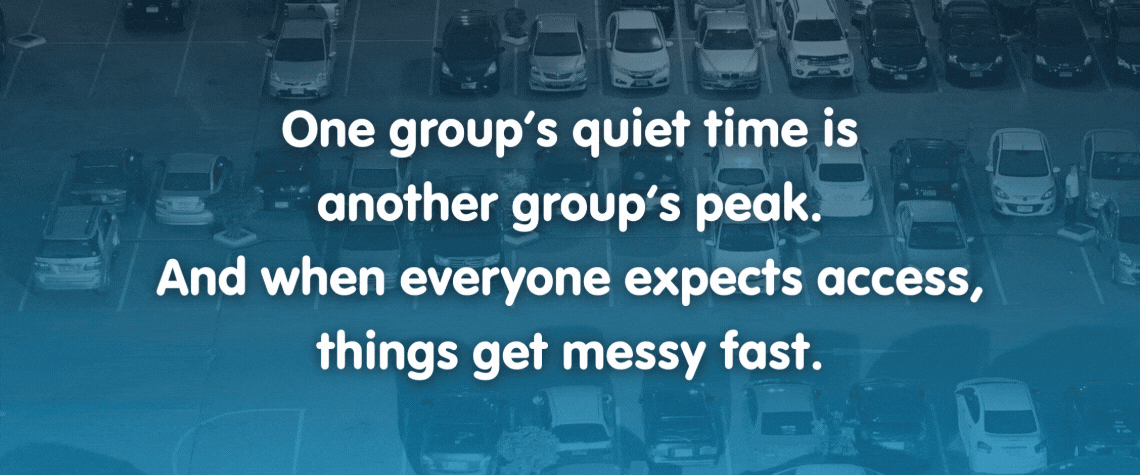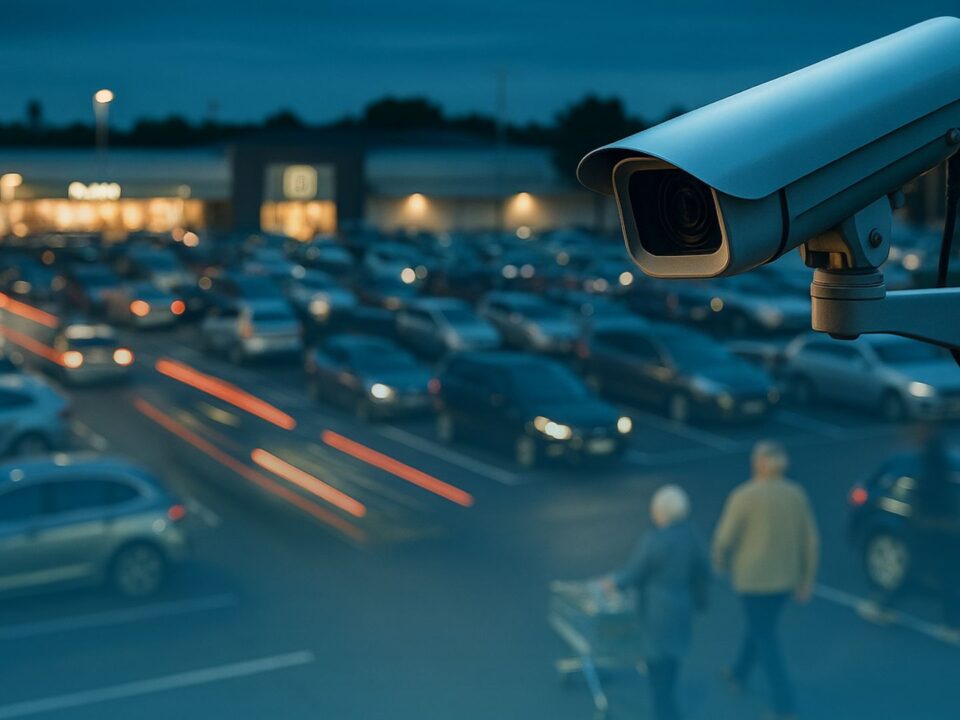One Car Park, Multiple Problems

Why the best-run car parks don’t generate complaints
28/05/2025
What we look for in a site – and why we sometimes say No
13/06/2025Why good car park management means understanding what happens at different times of day
A car park that looks calm at 11am might be chaos by 6. Or it might already be causing problems before breakfast.
That’s the thing. Most car parks don’t have one problem. They have several - and they don’t always show up all at once.
Some spaces are misused in waves. Others are under pressure from multiple types of users at the same time. Either way, what seems straightforward on paper can be far more complicated in practice.
We’ve written before about how pressure builds over the course of a single day - the morning bottlenecks, the lunchtime overspill, the evening frustration. But this post looks at something slightly different. Not just the when, but the who. Not just how the pressure changes hour by hour - but how it overlaps.
Because one group’s quiet time is another group’s peak. And when everyone expects access, things get messy fast.

The overlap problem
Take a gym car park.
It’s not busy all day - just for a few hours in the morning, again at lunchtime, and then after work. And yet it causes complaints. Not because it’s always full, but because of how people arrive - and how long they stay.
Some are there for 45 minutes. Others take longer. The timing of classes matters. So do shower queues. So does the tendency to chat to a trainer or friend before heading off.
We covered this in detail in our blog on gym parking. But the broader point applies elsewhere too. It’s the rhythm of use that creates pressure.
Fast-food outlets, for example, often face the opposite pattern. Customers come and go quickly. But the car park stays full - because local workers or commuters treat it as free daytime parking. So the actual visitors can’t get in.
Then there are sit-down restaurants. The pressure here builds in the evening, when diners stay longer and new arrivals find nowhere to park. One wave hasn’t left before the next one arrives.
And then there’s the residential pattern - different again. There’s no peak, just tension. Residents expect certainty. Visitors turn up uninvited. Someone parks in the wrong bay, and the whole system starts to fray. We explore this more fully in our residential car park guide, but the underlying problem is familiar: shared space, multiple users, little clarity.
Flat rules don’t fix layered problems
This is where many car park systems fall short.
They rely on a single rule - a time limit, a permit, a restriction - to solve what is actually a layered issue. And it doesn’t work.
A two-hour limit might help keep commuters away. But it could just as easily penalise someone staying for a gym class. A permit system might keep outsiders out - but not residents who let friends park wherever they like. A 90-minute window might suit shoppers on a weekday, but not diners on a Saturday.
In other words, flat rules don’t match shifting pressure. They’re too blunt for the job.
That’s why many sites still experience complaints after rules are put in place. We’ve seen restaurant car parks with rigid time limits that backfire. Gym members ticketed during cool-downs or post-session chats. Rules applied with the best of intentions - but without enough flexibility to reflect what actually happens on site.

Layered problems call for layered solutions
The solution isn’t to overcomplicate. It’s to match the setup to the site.
That means looking at how the car park is really used. Who’s arriving. When they stay. What the pressure points are. And what kind of system will make the space work better for those who need it.
Sometimes that means a time window that changes by day. Sometimes it means Scan & Stay - where only paying customers are validated. Sometimes it means different rules for different periods: restaurant customers from 5pm, salon clients before 3, staff all day.
We’ve seen this in practice at mixed-use sites - for example, where a fast-food outlet shares space with a sit-down restaurant. The fast-food side needed quick turnover. The restaurant needed longer stays. So we set up dual signage, exemptions, and rules that recognised both. The result? No more conflict. Just a car park doing its job for both businesses.
This kind of setup isn’t complex for the sake of it. It’s just aligned with reality.
It’s not about being strict - it’s about being fair
One of the most common concerns we hear is that enforcement feels heavy-handed. But in our experience, the best systems aren’t the strictest. They’re the fairest.
Fair means consistent. It means understandable. And it means that the right people can use the space without hassle.
When that happens, things settle. Staff arrive calmly. Customers aren’t flustered before they’ve walked through the door. Residents stop feeling like they’ve lost control of their own car park.
And complaints - the kind that escalate or make it into online reviews - tend to drop away.
We’ve seen what happens when the opposite is true. A boutique shop where regulars can’t park. A patient who cancels their appointment because the disabled bay is taken. A hotel guest who cancels their stay after circling a full car park and getting nowhere. These aren’t just anecdotes - they’re business losses. And they all stem from systems that don’t reflect actual use.
Our Simplified Systems
The best systems feel invisible
When a car park runs well, no one talks about it.
That’s the goal. Not to be noticed - but to be relied on. No scrawled notes under wipers. No last-minute staff interventions. No calls to say, “Someone’s blocked me in again.”
Instead, the right people park, the wrong people don’t, and everything just works.
We’ve helped gyms achieve this with stay times and exemptions that reflect class schedules. We’ve supported fast-food operators with short-stay rules that reset misuse without deterring trade. We’ve worked with residential blocks where a simple system restored a sense of order without escalating tensions.
And we’ve seen how much calmer things feel when a car park runs the way it’s meant to.
If your car park only causes problems some of the time, you probably don’t have one issue. You have several. Each tied to a different group of users, each showing up at different times.
The good news is that most of these issues can be fixed. Not by throwing in more restrictions - but by building a system that actually reflects how the space is used.
At Park & Control, that’s what we do. We don’t just install signs. We look at the whole picture - and build something that fits.
So if your car park is under pressure, or just not quite working, let’s talk. There’s probably more going on than you realise. And with the right setup, it can run better - for everyone who needs to use it.




